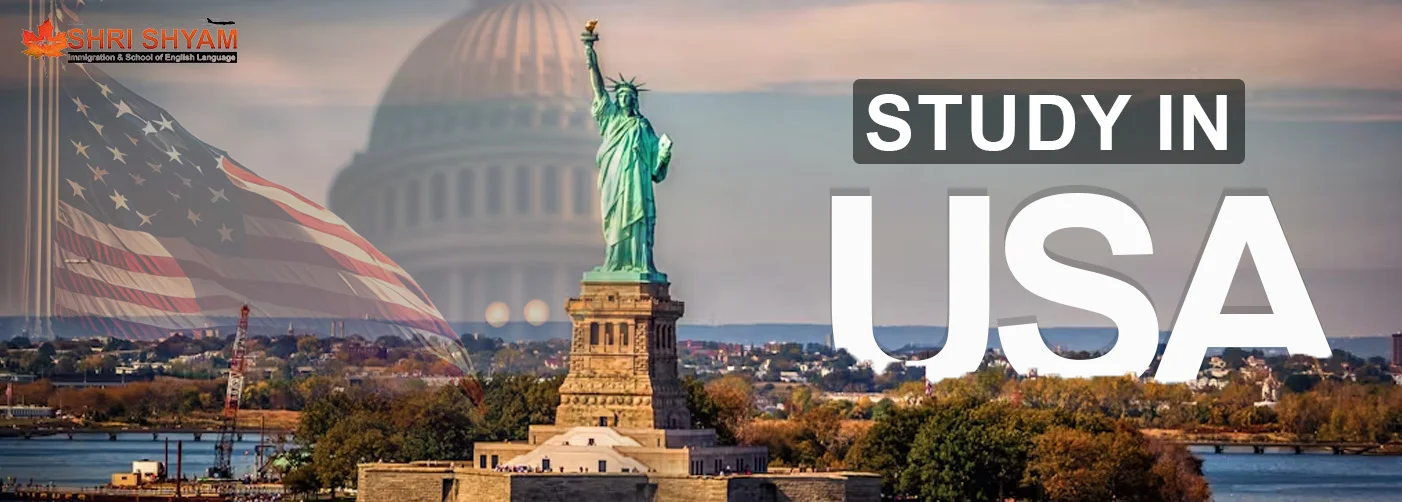
Student Visa
Higher education from international universities is recognized globally and given high preference for best career prospects. To gain higher education in top-class international education centers, students need to move abroad on a study visa. A study visa gives an eligible student to be a part of the selected university, pursue education and live in the country until his course is completed. Certain countries and universities also allow students to work part-time on the same visa while they are still pursuing their education.
SHRI SHYAM renowned Student Visa Consultancy and has an exclusive team of Student Counsellors and study visa experts to assist interested students with a study visa for international countries. Our team analyze the student’s past education, work experience (if any), English language skills and adaptability factors and suggest them the best suitable options to study abroad. With this, the team renders trusted service in applying for university admission, associated formalities and visa application process. While we process study visas for all countries, our highest record of success in student visa processing revolves majorly for the following countries
Visa working process
Direct Interviews
Faster Processing
Visa Assistance
Cost-Effective
USA Student Visa
Studying in the USA is a dream for many international students due to its diverse range of academic programs, world-renowned institutions, and opportunities for research and professional development. Here’s a comprehensive guide to help you navigate the process of studying in the USA:
Why Study in USA?
- High-Quality Education:
- Diverse Programs:
- Global Recognition:
- Cultural Diversity:
- Innovation and Research:
The USA is home to many of the world’s top universities and colleges, offering cutting-edge research facilities and a broad spectrum of academic programs.
Whether you are interested in engineering, business, arts, or sciences, the USA offers a multitude of programs and specializations.
Degrees from American institutions are recognized and respected worldwide, often opening doors to global career opportunities.
With students from all over the world, studying in the USA offers a unique opportunity to experience a rich cultural exchange and build a global network.
The USA is at the forefront of technological and research advancements, providing students with the opportunity to work with leading experts and on cutting-edge projects.
Choosing a Program and Institution
- Research Programs:
- University Rankings and Accreditation:
- Location:
Identify your field of interest and research programs that align with your career goals. Consider factors such as curriculum, faculty expertise, and available research opportunities.
Check the rankings and accreditation of institutions. Accreditation ensures that the institution meets certain standards of quality and rigor.
Consider the location in terms of climate, cost of living, and lifestyle. Major student cities include New York, Boston, Los Angeles, Chicago, and San Francisco.
Application Process
- Admission Requirements:
- Application Deadlines:
- Application Portal:
Each institution has specific requirements, which may include academic transcripts, standardized test scores (like SAT, ACT, GRE, GMAT), letters of recommendation, personal statements, and a resume.
Be aware of the deadlines, which can vary by institution and program. Applications typically open a year in advance.
Most institutions use online application portals. Prepare all required documents and submit your application within the deadlines.
Financial Considerations
- Tuition Fees:
- Scholarships and Financial Aid:
- Cost of Living:
Tuition fees vary widely depending on the institution and program. On average, undergraduate programs can range from $20,000 to $50,000 per year, while graduate programs can be more expensive.
Explore scholarships, grants, and assistantships offered by universities, government programs, and private organizations. Many institutions offer financial aid specifically for international students.
The cost of living varies by city and lifestyle. On average, students may need between $10,000 and $20,000 per year for living expenses, including accommodation, food, transportation, and personal expenses
Visa and Study Permit
- Student Visa (F-1, J-1, M-1):
- SEVIS Fee:
- Visa Interview:
Most international students need an F-1 visa. After receiving an acceptance letter and a Form I-20 from a US institution, you can apply for a visa at the US embassy or consulate in your country.
Pay the SEVIS (Student and Exchange Visitor Information System) fee before your visa interview.
Schedule and attend a visa interview at a US embassy or consulate. Be prepared to show proof of acceptance, financial stability, and intent to return to your home country after your studies.
Arrival and Settling In
- Accommodation:
- Health Insurance:
- Orientation Programs:
Arrange accommodation before arriving in the USA. Options include on-campus dormitories, off-campus apartments, and homestays.
Most institutions require students to have health insurance. Check if your institution offers a health insurance plan or if you need to arrange one independently.
Participate in orientation programs to familiarize yourself with the campus, academic expectations, and local culture.
Post-Graduation Opportunities
- Optional Practical Training (OPT):
- H-1B Visa:
- Permanent Residency:
F-1 visa students can apply for OPT, allowing them to work in their field of study for up to 12 months after graduation. STEM graduates may extend OPT for an additional 24 months.
After OPT, students may apply for an H-1B visa to continue working in the USA. This visa is employer-sponsored and allows for longer-term employment.
Some students choose to pursue permanent residency (a green card) through employment-based immigration programs.
Would you like more detailed information on any specific aspect of studying in the USA?
Feel free to contact with us
You are nothing witout your seg wcare set injury magna consectr elitu.